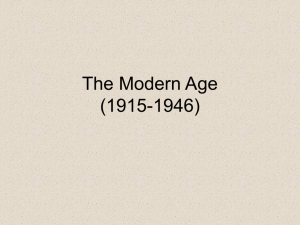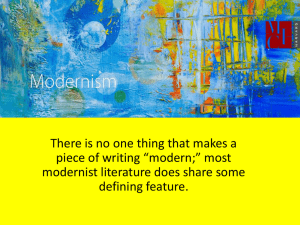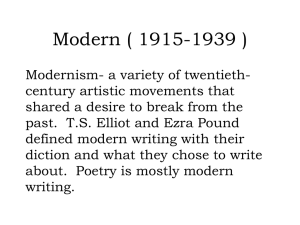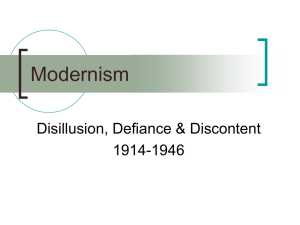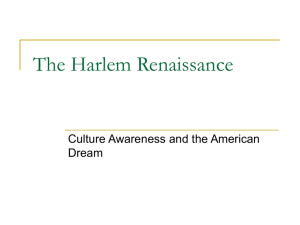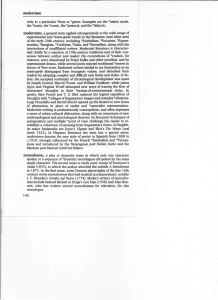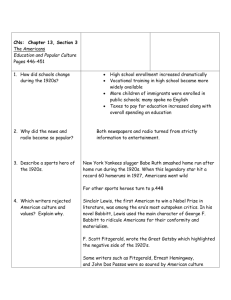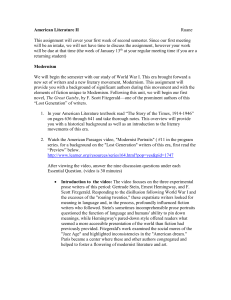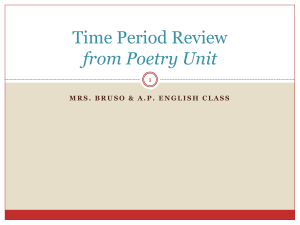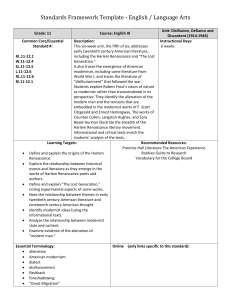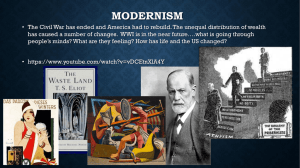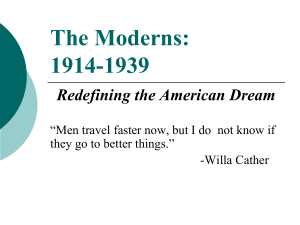Unit 5 * Disillusion, defiance, and discontent
advertisement
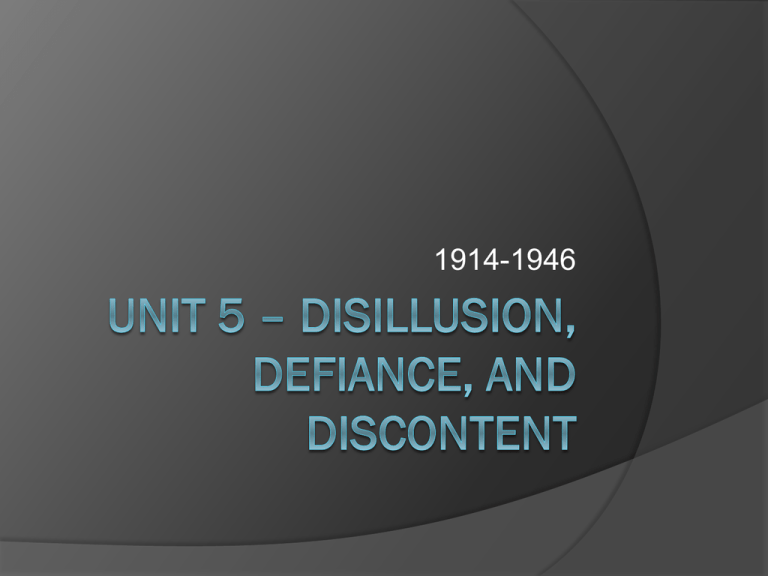
1914-1946 Look at the time line on page 704… What are some critical events that occurred in America during this time period? Historical Background The years preceding WWI were characterized by a sense of optimism. Wilson was forced, when war broke out, to turn his attentions towards problems of the world rather than concentrating on problems at home. WWI – Allies vs. Central Powers Trench warfare Sinking of the Lusitania E.E. Cummings, Ernest Hemingway, and John Dos Passos all served as ambulance drivers. Prosperity and Depression Failing of League of Nations Prohibition Recession in 1920 and 1921 After those years the economy boomed Radio and jazz Great literary interpreter of the 1920s F. Scott Fitzgerald (the next book we are going to read is The Great Gatsby ) Writers flocked to Greenwich Village, New York. October 1929 – Stock Market Crash 1932 FDR elected The New Deal WWII – The Allies vs. The Axis Powers Dropped the atomic bomb and its implications Literature of the Period The Birth of Modernism Modernist experimented with a wide variety of new approaches and techniques = diverse body of literature. Sought to capture the essence of modern life in both form and content of their work. Modernist works demand more from readers. Imagism Ushered in Modernism 1909-1917 Poems contained clear expression, concrete images, and the language of everyday speech. H.D. and Ezra Pound Expatriates (exiles) Disillusioned by WWI Gertrude Stein – “lost generation” Fitzgerald and Hemingway Later Pound and Eliot New Approaches Stream-of-consciousness technique Presentation of a series of thoughts, memories, and insights connected only by a character’s natural associations Ulysses – James Joyce Faulkner, Porter, Dos Passo Poets – Cummings, William Carlos Williams, Wallace Stevens, Marianne Moore They stretched boundaries in punctuation, wordplay, and speech Writers of International Renown Nobel Prize for Literature Sinclair Lewis – great satirist, Main Street 1936 – Eugene O’Neill playwright Desire Under the Elms, The Iceman Cometh, and Long Day’s Journey into Night Eliot, Faulkner, Hemingway (The Sun Also Rises, A Farwell to Arms), Steinbeck (Of Mice and Men, The Grapes of Wrath) The Harlem Renaissance In Harlem, African American writers Most moved to Harlem from the South Langston Hughes 1920s into the 30s Belonged to no single school of literature
